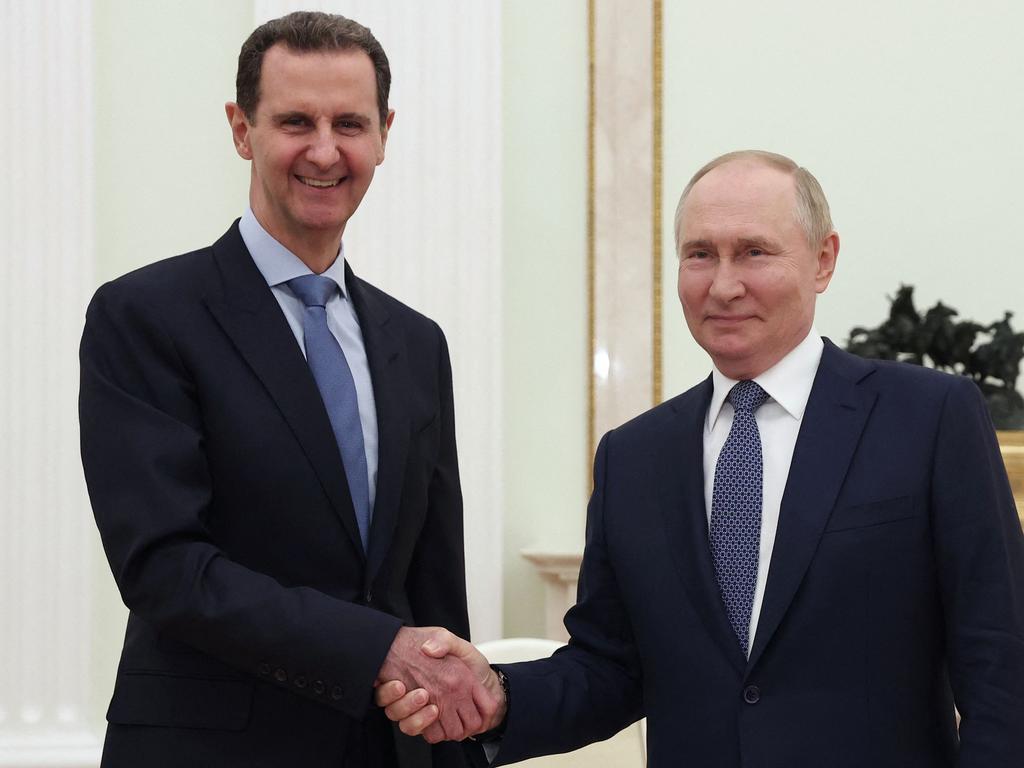
While the successful advance of the Syrian Sunni insurgents into Damascus seemed sudden, it didn’t happen overnight. Assad’s flight from the country seals what has been a disastrous few months for Tehran and its allies.
By removing the Assad regime, the insurgents – known as Hayat Tahrir al-Sham – have cut off Tehran’s main proxy militia, Hezbollah, from its supply lines. This was possible because of Israel’s mauling of Hezbollah in November, prompting the terror group to accept a ceasefire with the Jewish state. The decision was in direct contrast with Hezbollah’s goal when it entered the war on October 8, 2023.
As Hezbollah leader Hassan Nasrallah said at the time: “The Lebanon front will not stop before the aggression on Gaza stops. The resistance in Lebanon won’t stop supporting and assisting the people of Gaza, the West Bank and the oppressed people in these holy lands.”

By the time both parties agreed to a ceasefire, Nasrallah was dead. Hezbollah decided that sticking by its junior ally, Hamas, in Gaza was no longer worth the price. The dramatic events in Syria rapidly followed. Hezbollah’s actions came after Iran’s decision to avoid any major retaliation for Israel’s October 26 attacks on targets inside Iran. This reluctance persisted despite Supreme Leader Ali Khamenei’s promise of a “crushing response to what they are doing to Iran … and to the resistance front” after the attack.
Iran hesitated in part because of the failure of its Iraqi and Yemeni proxies to penetrate Israeli air defences with drones and missiles. Israel continued to make progress against Hamas in Gaza despite Iran’s various efforts to open support fronts to relieve the pressure. Gaza’s Islamists are now isolated, facing Israel alone.
The apparent eclipse of Iran’s proxy axis, its helplessness in the wake of Israeli countermeasures and the loss of Syria are of particular note because the alliance had fared so well for so long.
Iran’s first success in the field of irregular warfare came with its creation of Hezbollah in 1982. It piloted Hezbollah to a victorious insurgency against Israel from 1985 to 2000, then to undisputed political domination of Lebanon after 2008. After the fall of Saddam Hussein in 2003, Tehran-supported Shi’ite militias became the dominant political-military force in Iraq. Outreach to Hamas via Hezbollah from the early 1990s secured Iran a foothold in the Israel-Palestinian conflict, with its enormous symbolic importance in the Arab and Muslim worlds.
The 2010 Arab Spring, the 2012 destruction of the Saleh regime in Yemen and Iran’s rescue of the Assad regime in Syria that same year all contributed to the expansion of Iranian influence across the region.
On the eve of October 7, 2023, Iran’s proxy system seemed at the height of its power. Iran, with its formidable ballistic-missile array and its nuclear ambitions, appeared to have succeeded in turning indirect conflict into a tool of state. A year on, however, everything looks different. Iran’s error was that it neglected a basic rule of irregular warfare: avoid being drawn into the open on the conventional battlefield.

Doughty proponents of irregular warfare, from George Washington to Ho Chi Minh, all lived by this rule. Iran and its allies have abandoned it and suffered the consequences. The October 7 attack, in addition to being a massacre, was a strategically absurd decision by a tiny statelet to launch a conventional offensive against a vastly more powerful neighbour. Hezbollah’s choice to bombard Israel in the following days constituted a similar misstep. Iran’s decision in April this year to abandon proxy warfare and launch a direct attack on Israel compounded the error.
In each case, Israel’s response laid bare the profound inferiority of the Iranians and their allies in direct confrontation. The result: Hamas and Hezbollah are decimated, Gaza is a smoking ruin, southern Lebanon is a pile of rubble and Iran is exposed as helpless before Israeli air power.
The region now sees Iran and its misnamed axis of resistance as a paper tiger. The rebels’ assault in Syria and the stunning collapse of the Assad regime are the first fruits of this new look. More will doubtless come.
Jonathan Spyer is director of research at the Middle East Forum and director of the Middle East Centre for Reporting and Analysis. He is author of Days of the Fall: A Reporter’s Journey in the Syria and Iraq Wars. This was originally published in The Wall Street Journal.







The fall of Bashar al-Assad’s regime in Syria marks the eclipse of Iran’s self-styled axis of resistance in the Middle East.